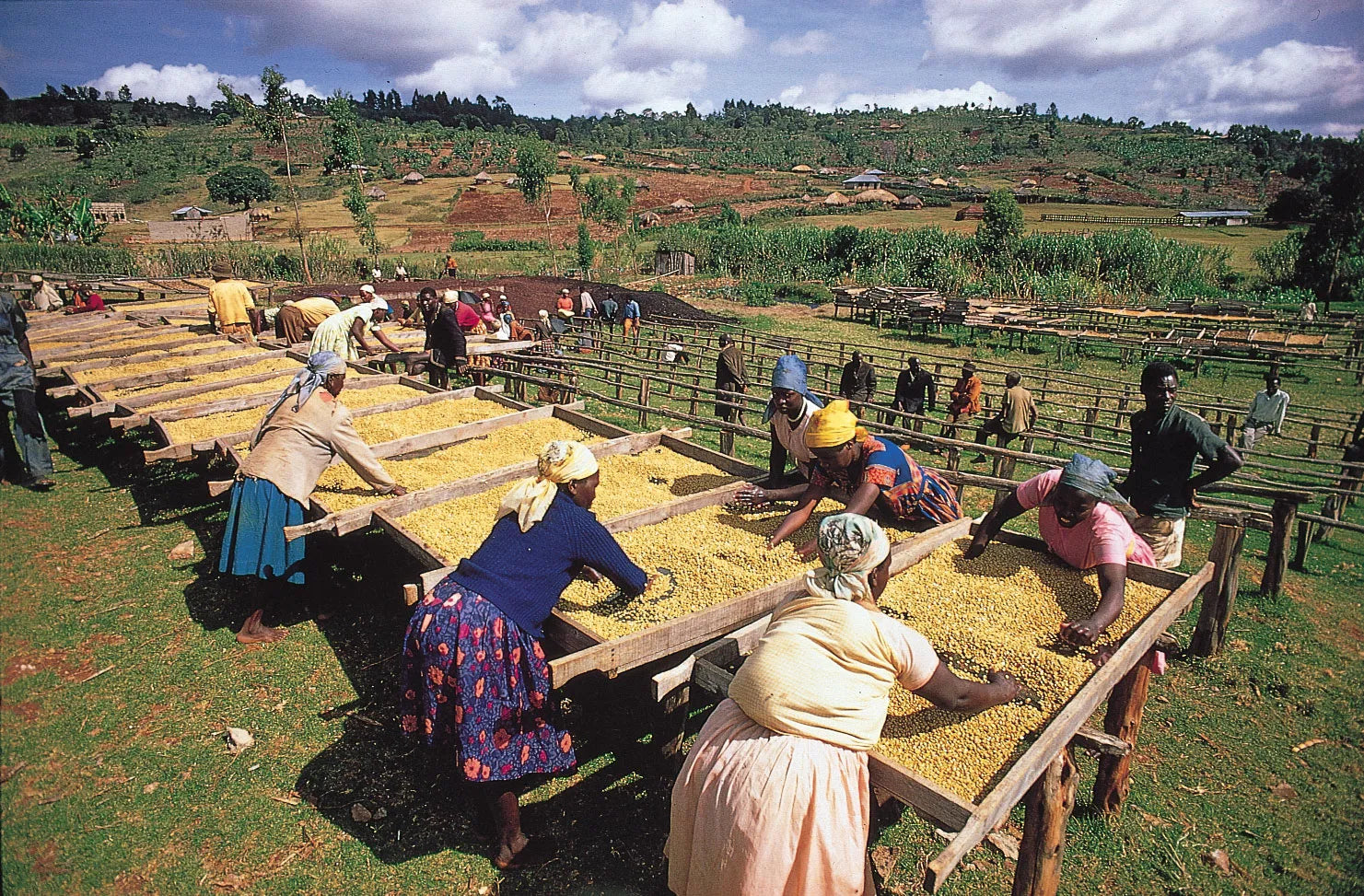
Nyeri
Coffee Production in Nyeri, Kenya
1. Historical Background
Nyeri County, located in the Central Highlands of Kenya, has long been one of the country’s most renowned coffee-producing regions. Coffee was first introduced to Kenya in the late 19th century by missionaries, and the crop took strong root in Nyeri due to the region’s high altitude, rich volcanic soils, and consistent rainfall. Over time, the area developed a reputation for producing some of the most distinctive and high-quality Arabica coffees in the world. The establishment of smallholder cooperatives and centralized processing stations—locally called “factories”—allowed local farmers to collectively process and market their coffees, a model that continues to define the region’s structure today.
2. 20th Century Growth and Regional Development
Throughout the 20th century, Nyeri evolved into a cornerstone of Kenya’s coffee economy. The cooperative system expanded rapidly, allowing thousands of small-scale farmers to access shared infrastructure and premium markets. Farms in Nyeri are generally very small—often just 0.25 to 1 hectare in size—but the high density of cultivation and focus on quality has resulted in significant output relative to land size. Key cooperatives such as Gikanda, Tekangu, and Mutheka have become well-known throughout the specialty coffee world. The combination of favorable growing conditions—elevations between 1,600 and 2,100 meters above sea level—and varietals like SL-28 and SL-34 has made Nyeri coffee synonymous with bright acidity, layered complexity, and strong fruit-forward profiles.
3. Present-Day Production and Processing Trends
Today, Nyeri remains a vital region in the global specialty coffee trade. The majority of coffee here is produced by smallholders who deliver cherry to local wet mills, where it is typically processed using the washed (fully washed) method. This process involves pulping, dry fermentation, rinsing, soaking, and slow drying on raised beds for up to three weeks. Many factories in Nyeri continue to practice the traditional Kenyan "double fermentation" method, which enhances clarity and structure in the cup. While washed coffees dominate, a few cooperatives and exporters have begun experimenting with natural and anaerobic processes, albeit on a much smaller scale. Traceability is generally maintained to the cooperative and wet mill level, and in many cases, down to the day of harvest and specific grower groups.
4. Market Dynamics and Trade Challenges
Nyeri coffees consistently achieve some of the highest prices at the Nairobi Coffee Exchange and in direct trade relationships due to their quality and reputation. However, the region is not without its challenges. Coffee production in Nyeri, like elsewhere in Kenya, has been declining due to land fragmentation, climate change, aging trees, and generational shifts away from agriculture. Additionally, many farmers face low profits due to high input costs and fluctuating market prices. Despite these issues, international demand for Nyeri coffees remains strong, particularly in North America, Europe, and parts of Asia. The growing popularity of direct trade relationships has also enabled some cooperatives to secure better returns and reinvest in quality improvements.
5. Outlook
Nyeri’s outlook in the coffee sector remains cautiously optimistic. While systemic issues persist, the region’s strong reputation, cooperative infrastructure, and ongoing innovation in processing give it a competitive edge. Continued investment in agronomy, youth engagement, and climate resilience will be necessary to ensure long-term viability. If managed well, Nyeri is likely to remain one of the most important origins for distinctive, high-quality specialty coffee in Africa. Its coffees will continue to attract roasters and consumers seeking vibrant acidity, refined sweetness, and remarkable traceability.
Learn more about the Origin
Shop Coffees from Nyeri
-
Example product title
Regular price $19.99 USDRegular priceUnit price / per -
Example product title
Regular price $19.99 USDRegular priceUnit price / per -
Example product title
Regular price $19.99 USDRegular priceUnit price / per -
Example product title
Regular price $19.99 USDRegular priceUnit price / per

